Learning to plant alstroemeria and properly care for it
Some flowers seem to be a living embodiment of fabulous images, instantly sinking into the soul with enchanting delicate beauty, fragility and grace. This is the favorite of florists - alstroemeria, which can be grown not only in specialized greenhouses, but also in the open field. Caring for this bright miniature lily, despite its exoticism, will not take much time, even novice flower growers can handle it.
Site preparation
Alstroemeria is quite unpretentious. Subject to a few simple recommendations, she will certainly delight the eye with luxurious flowering. The most crucial stage is planting a plant. The successful cultivation of the Peruvian lily is directly related to the selection of the correct location on the site. It should be a well-lit, but not too sunny and hot area with loose soil that is free to allow air and moisture to pass through. It is optimal if the soil contains an admixture of sand.
Planting alstroemeria on heavy, clayey soils has a detrimental effect on its development: the flowers wither, grow frail and weakened and almost do not form buds, even despite careful care. Experienced gardeners advise in this case to pre-prepare the soil and create a good drainage system. You can use any natural baking powder for this, for example:
- high-moor peat;
- rotted manure;
- leaf compost.
Slightly acidic or neutral soils (with a pH value of 5.5 to 6.5) are ideal for alstroemeria.
Advice
If the soil in the area is alkaline (the pH is more than 7), then planting Peruvian lilies in it is possible, but to get flowering plants you will have to fertilize it with phosphoric acid.
Landing subtleties
In order for young alstroemeria to quickly take root in the open field, they are planted in dry soil, choosing a clear sunny day for the procedure. A little organic fertilizer is added to the hole. It is not necessary to deeply deepen the seedlings; it is best to dig them in to the same level as the seedlings when grown at home in a container. If bulbs are used, they are buried to a depth of no more than 20 cm.
Alstroemeria bushes grow quite strongly and branch well, so they will need space for uniform development. Wells in one row are made at a distance of 30–40 cm from each other. Between the rows, 60 to 20 cm of free space is left, focusing on the size of young bushes and the strength of their growth.
You can count on abundant flowering of alstroemeria only when mulching the soil. For this procedure, leaf compost is most often used, you can also use sawdust or peat. The composition is abundantly scattered around the seedlings, avoiding falling on their tops. The mulch layer should be at least 7.5 cm thick. This is necessary to protect the plant's root system from heat. A feature of Peruvian lilies is that when the soil is heated above 23 °, their tubers enter a phase of intensive growth, which has a bad effect on the formation of buds. In addition, mulch will help control weeds and keep the soil loose.
Planting is completed with abundant watering until the soil is completely moistened.
Basic rules of care
Although the epithets "capricious" and "demanding" are not about this flower, alstroemeria still needs some care. Peruvian lilies are very moisture-loving and do not tolerate drying out of the soil. But an excess of moisture will not benefit the bushes: in swampy soil, the roots are quickly affected by rot.Therefore, when the planting is left behind, and the flowers have taken root in the open field, they are often watered so that even the surface layer of the earth does not dry out much, but in moderation.
Advice
You can maintain the moisture level necessary for plants by mulching and regularly loosening the soil around them.
Alstroemeria care includes mandatory feeding. It is held frequently, every week. At the initial stages of seedlings development, complex mineral compositions containing a lot of potassium are used for fertilization. When the plant picks up the first buds, fertilizing is done with a mineral mixture specially developed for flowering plants with a low percentage of nitrogen.
Suitable for Peruvian lilies and organic fertilizers loved by many gardeners - bird droppings, mullein. But here it is important to be careful not to overdo it with the dosage, otherwise you can burn the roots of the delicate plant. Natural nutrients are introduced in small amounts, using only well-rotted and highly diluted material.
Should you trim alstroemeria?
Correct planting and caring for alstroemeria will definitely lead to its flowering. It happens very intensely. Up to 80-130 very small buds can form on one bush. To improve the appearance of the plant, they resort to pruning. It is carried out as needed throughout the growing season.
- In the spring, when the first shoots appear, the bush is thinned out, without regret getting rid of weak branches, leaving only the most powerful ones on it. At the first pruning, alstroemeria loses about a third of all its shoots.
- Further care consists in constant monitoring of the plant, timely disposal of drying foliage and wilted flowers. Old shoots without buds are also removed by cutting them at a height of 10-15 cm from the root.
Thanks to these simple activities, alstroemeria do not lose their attractiveness throughout the summer, and their flowers become larger. Pruning also reduces the risk of disease and pest damage to plants.
Preparing for winter
Alstroemeria varieties are varied, and their number inspires awe: more than 190 varieties of the plant have already been bred. Most of them love warmth and do not tolerate frosty winters, although there are some that can survive in extreme cold (down to -25 ° C). Therefore, with the arrival of autumn, the perennial Peruvian lily requires special care.
Watering is completely stopped. After the bush has faded, it is cut off, leaving about 6-7 cm above the ground. It is important not to miss the moment and do this even before the first frost. Then the plant is tightly covered. You can use fallen needles, spruce or pine branches, dry foliage, straw for this. A plastic wrap is laid on top, fixing it with a layer of earth or mulch. Under such a warm "fur coat" alstroemeria is not afraid of the cold.
In northern latitudes, where winters are very long and harsh, it is not recommended to leave plants outdoors for the winter. Experts advise to remove tubers from the soil before the onset of frost and store them in basement-type rooms, in which the air has a low but positive temperature.
Advice
To avoid rotting the roots of the dug out flower, you should not completely clean off the soil from them, you just need to slightly dry the lump of earth along with the tuber.
Alstroemeria is a very unusual plant that can bring exotic charm to any corner of the garden, decorate and revive even the simplest bouquet. For all its obvious tenderness and fragility, this mountain flower has amazing resilience.
Do not doubt your strengths and be afraid of possible difficulties, because when growing alstroemeria, they are unlikely to arise. Caring for her is little different from caring for flowering plants already familiar to gardeners.Compliance with the basic rules of planting and watering, frequent fertilization and regular pruning are the basic principles on which the successful breeding of alstroemeria is based. One has only to try, and these beauties will definitely win your heart!

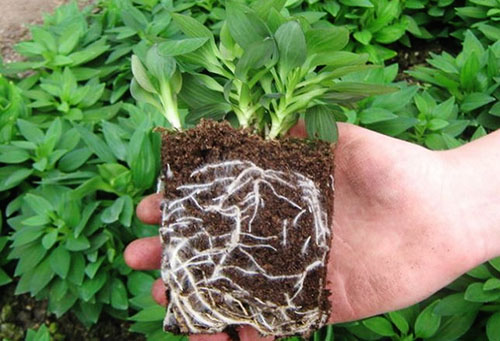
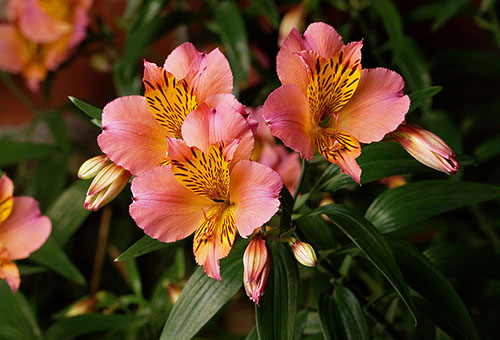
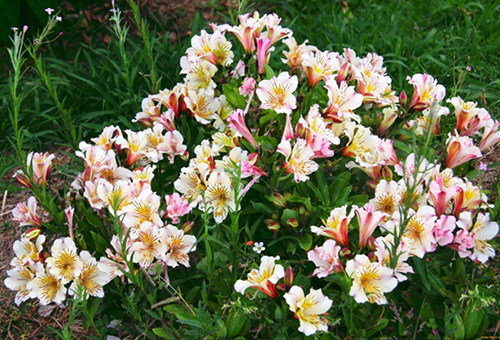
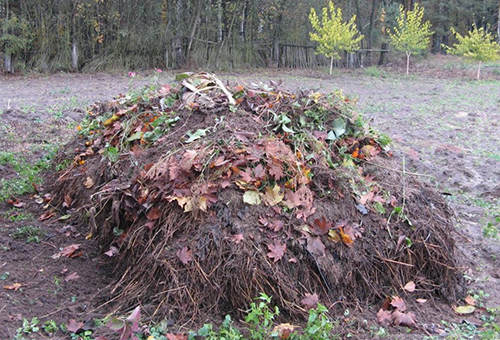
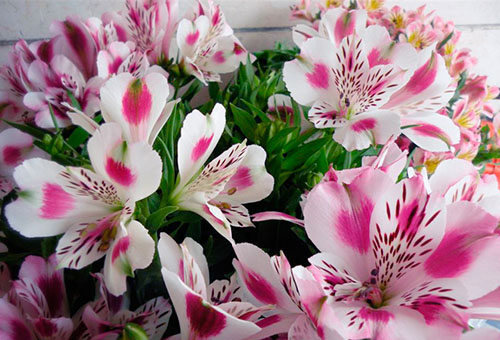


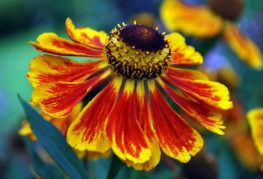
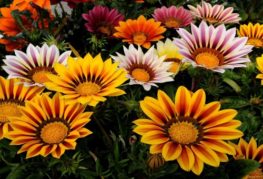

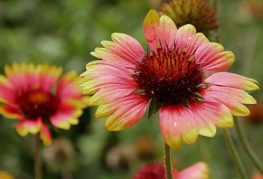
and will be published shortly.